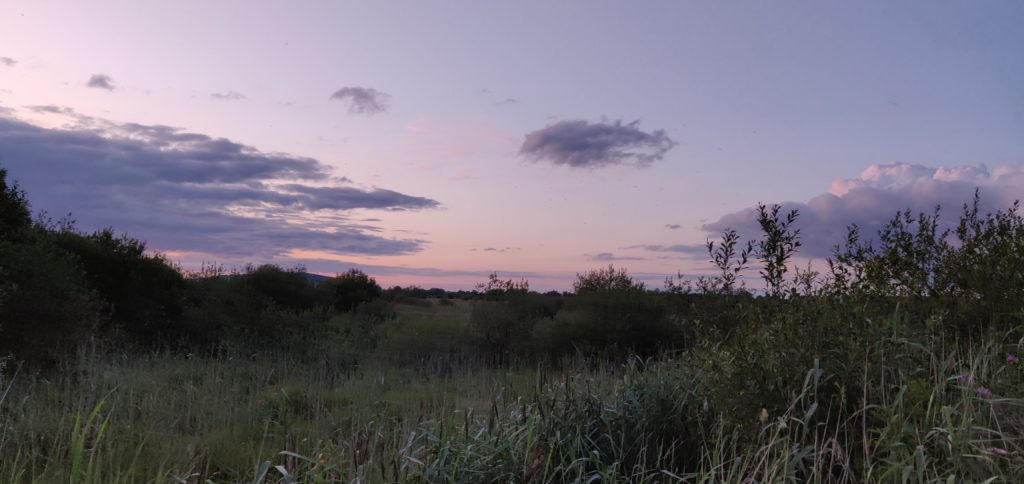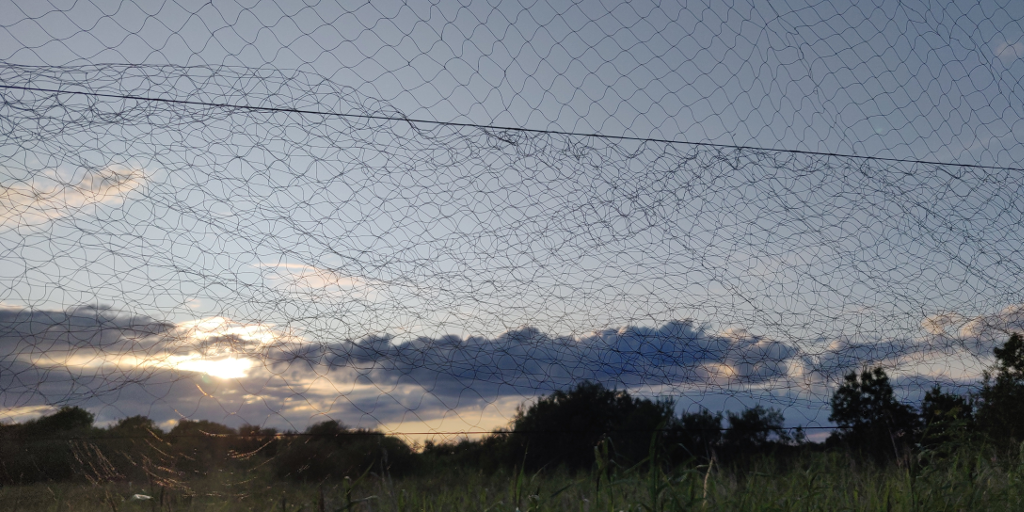This short short story was first published in the March 2020 issue of The Niche, the magazine of the British Ecological Society, as part of their “Horizons” ecofiction series. “Horizons” aims to use fiction to help visualise a better future aided by ecological science.
The swallow flew, and its flock flew with it. Down to the midges dancing above the water, up over the shapely reeds to dogfight with the moths, down and up and up and back. Food. After food: rest. Soon: The roost, a dark tree in a dark fen, a belly full of insects, chattering calls. After rest: flight. Later: flying and flying, over the Irish Sea, over Europe, over Egypt and the Nile, over palaces and shanties and tombs. Over and not of them, on a journey.
Now: Stopped. Caught. The roost still ahead. The swallow is in the air, but not flying. Hanging. How? Held by something unseen, light but strong. Can’t make itself free. The dark has been coming, but now a light not of the sun, from the gaze of some great unknowable creature. A creature handling the swallow’s wings and feet, looking down from blue eyes and the light shining on its head, so bright. What is it?
…
The man worked carefully to unpick the swallow’s form from the mist net, as its dark eyes looked up at him. The rest of the ringing team were doing the same, all down the line of net, by the light of their head torches. After they had raised this net in front of the roost-tree, stretched taut between its poles, they had spent the evening standing still as statues and watching the twisting flock of swallows. The sun had set, and the evening had covered them all over in gold, then darkness. A red LED glowed on the side of the man’s head torch, a white blade of light shone from the front. Illuminating the swallow’s wing, where the last loop of net fell away, and it was only his hand that held it, delicately, like it was the most precious thing in the land. And who could say it wasn’t?
How many generations of swallows have been taken from nets since bird ringing studies began a century ago? Too many for a bird to grasp. They stretch back, links in an evolutionary chain, one of the unbreakable chains of life and death and survival that these scientific efforts have thrown light upon. We all journey along these chains, whether or not we see them. In the fen, the man put a metal ring on the bird’s leg, measured its wings, its little skull. He murmured to it like a puppy, as if his words could reassure or command it. Swallow, swallow, little swallow. Turning to the team’s scribe, what he said aloud was all data: Barn Swallow, Hirundo rustica, Age Code, morphometrics. Written in the thick logbook, to join a dataset of decades, made up of lives.
When he was finished, the man placed the swallow on his other hand, uncurled his fingers, and made it free. The swallow regained its flight, its birthright, became once again a bird. It called out as it burst from his hands and back to its journey, to wander and fly and live and die. Not a symbol or a datapoint, but a thing breathing and flying, made a messenger by the ring on its leg. Whether it would be caught once more in this fen or another, or found in the pellet of an owl or lying dead on sands or cobbles, the ring would carry the message. From it, man or woman could recognise this swallow, understand the Swallow, trace this swallow’s journey, understand the Journey. The man watched it go. The swallow flew.

The photos show Pollardstown Fen, Co. Kildare, by Fionn Ó Marcaigh. This story is based on a series of bird ringing sessions in the Fen, which targeted swallows under license from the National Parks and Wildlife Service and the British Trust for Ornithology. With apologies to Oscar Wilde.
Related Posts
Fieldwork, and Why Students Need It by Fionn Ó Marcaigh
Ecofiction: The Bog Down in the Valley by Fionn Ó Marcaigh
Research Haikus by Various Department Members
Ostrich Knees by Frank Jeal
On a Wing and a Prayer by Keith McMahon

